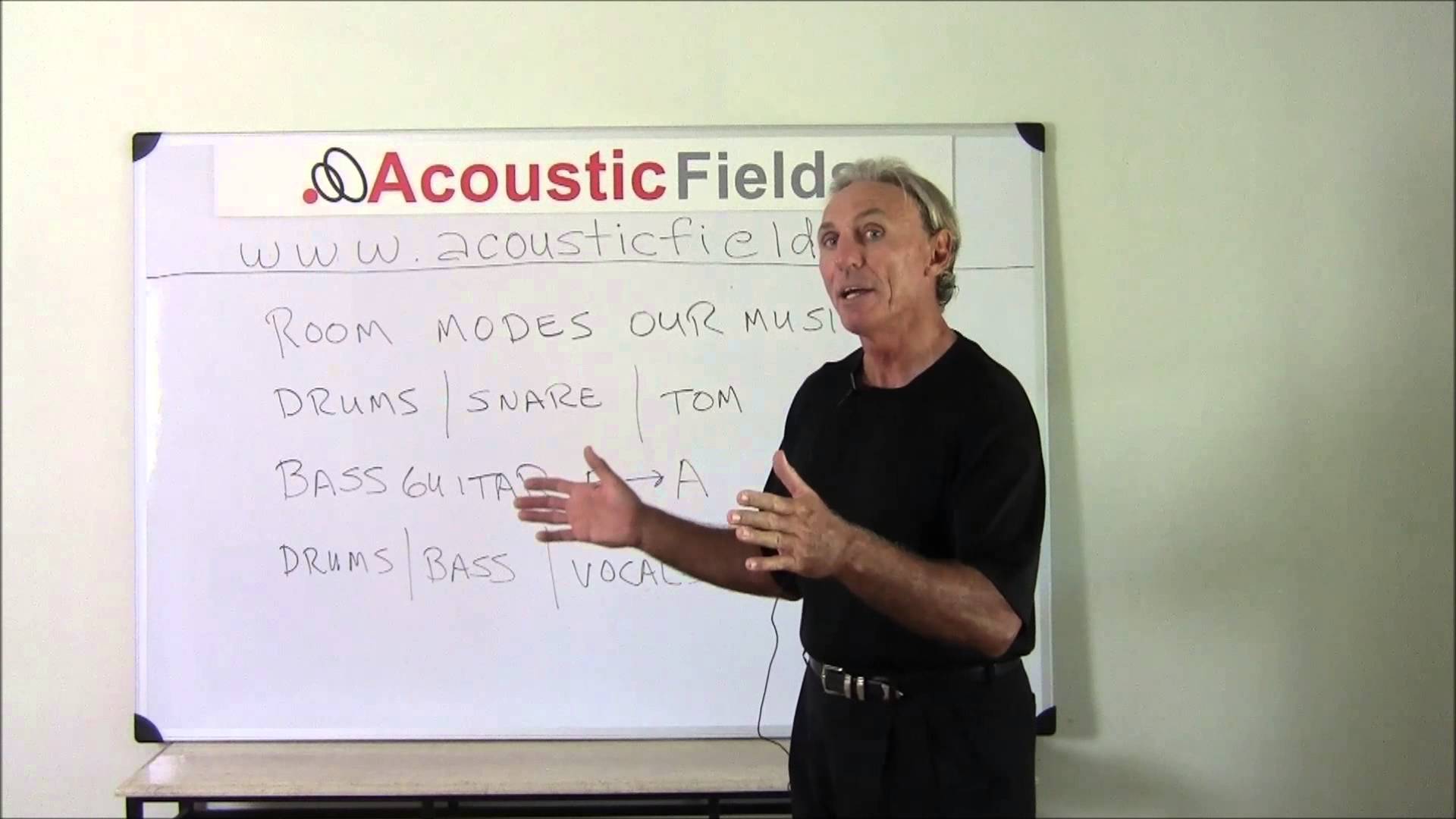Acoustic treatment comes in two major types: sound absorption and sound diffusion. Each of theses two main categories has sub divisions within them. Absorption has low, middle, and high frequency absorption. Diffusion works in the middle and high frequency areas. Your home studio acoustic treatment must address these two main technologies along with their cousins, in order to achieve the correct room acoustic for your particular room.
You will need to determine how many low frequency room modes you have in your room and more importantly where they are. You will need to manage middle and high frequency reflections from room boundary surfaces. You will need to choose the correct diffusion technology for the rear wall, if it is going to be a wall used in a control room. Many variables requiring many decisions. Eliminate the guess work and start with the low frequencies.
The Home Studio Environment
When you approach sound pressure management within your small room environment, you must start with the low end of the room. Low frequency waves are long and are difficult to absorb. They take special technologies in order to achieve the results necessary to absorb real low frequency energy waves.
Low frequency issues will actually mask certain other frequencies. This will cause middle frequencies to sound blurred and smeared. Room modes caused by certain low frequency issues can actually attenuate some frequencies and then exaggerate others. We want to be able to hear everything in our music and have minimal room sound contribution. In this video I discuss this concept further for you.
Low Frequency Energy First
Low frequency sound absorption technology is divided into three main groups: membrane, Helmholtz, and diaphragmatic. Membrane absorbers are sound absorbing units that have a membrane or diaphragm that vibrates in sympathy to air pressure. The membrane is thinner material than a diaphragmatic absorber and usually does not go as low in level. A diaphragmatic absorber takes into consideration the density of the front wall, the cabinet density, and the internal cabinet depth. Helmholtz resonators use a slit or slot to allow energy into the vessel. The density of the cabinet and the cabinet internal volume represent the level and rate of absorption, you can achieve.
Middle And High Frequency Absorption
Middle and high frequency absorption can be accomplished using open celled acoustic foams, rock or mineral wool, or other forms of sound absorbing material that does not have to be as large and thick in design and physical presence as a low frequency absorber. We are absorbing shorter lengths of energy, so we can have an impact on these shorter rays of energy with smaller amounts of materials. The biggest issue with middle and high frequency absorption is where to place it and how much to use. Sounds a little like low frequency absorption requirements, doesn’t it?
Sound Diffusion
There are many products out there that claim to be diffusers and can provide diffusion as part of your home studio treatment package. However, most diffusers are sound re-directors, not true sound diffusers. They do not perform the acoustical tasks of creating a uniformly diffused sound field within your room. What ever energy strikes them, it is re-directed into the opposite direction, not diffused.
To qualify as a diffuser, it must be able to take energy from reflections and redistribute that energy into a diffused array of energy back into at least one plane in the room without messing with the time or amplitude of the original signal. In this video I explain diffusion a little further for you.
So in summary, acoustic room treatment can be broken down into two main areas: sound absorption and sound diffusion. Sound absorption technology is further divided into low, middle, and high frequency absorption technologies. Sound diffusion has big boots to fill. A sound diffuser must create a diffuse sound field within the room. In order to do this, it must correspond to six different requirements. Only quadratic diffusion can achieve all six acoustic objectives.
If you want to learn more about this subject please sign up for our free room acoustic treatment videos and ebook which provide step by step instructions. Get instant access by signing up now.
Thanks
Dennis








I have L27x W16 H10 feets home theater. We facing 30hz and 50hz low frequency dips please give me suggestions thank u
Nazeer,
The frequency range from 30 – 50 Hz. is always an issue. Go to https://www.acousticfields.com/free-acoustic-treatment-room-analysis-tell-us-room/ and fill out the information in the link. Photos of all room surfaces are a benefit. We will locate the issues and apply the correct treatment.
Dennis